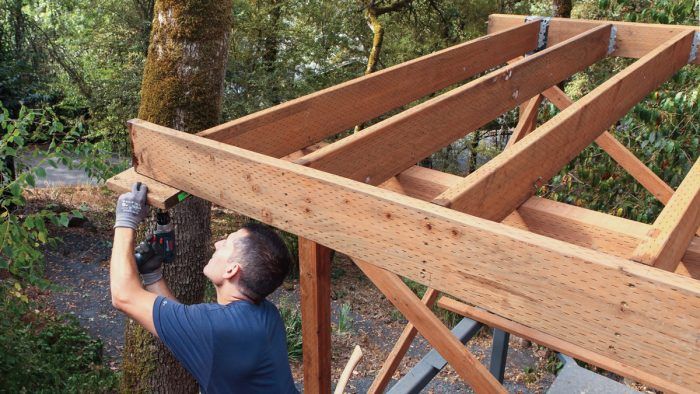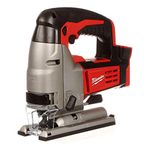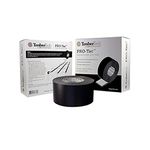
There are a few different ways to install rim joists depending on the situation. Here, we will discuss two ways to install rim joists that run perpendicular to the field joists and one way to install a rim joist that runs parallel.
Method 1: Through screwing
When a beam supports the joists from below, securing the rim joist to the field joists with through screws will save time over using hangers. Also, in this situation hangers are redundant because the rim joist carries little weight. The main function of the rim joist here is to keep the joists aligned.
As seen in the photos below, pull and mark the joist layout on the inside face of the rim joist, and then extend the layout lines down the rim joist’s face and over the top. Be sure to mark which side of the line the field joist falls to and then start a 3-in. screw to fasten the rim joist to the field joist. If you’re working alone, start this screw in the middle so you can balance the rim joist while holding it for the installation. Align the top of the field joist with one hand and drive the screw to secure the rim joist. Align the field joist to the layout mark you made on the inside face and then permanently secure the rim joist with two more fasteners. Finally, align and secure the rim joist to the rest of the field joists with through screws in the same manner.
1. Measure and mark the joist layout on the rim joist, remembering to indicate which side of the mark the joist will fall.
2. Use a square to extend the layout marks across the face and top of the joist.
3. Start the first screw near the top of a middle joist based on the layout marks you made on the face.
4. Align the rim top to the joist and fasten it to the joist with a screw.
5. Fasten the rim joist permanently to the joist with two more through screws.
What can go wrongIf the joists are attached to the beam, you may be fighting to get everything perfectly lined up. To correct this, loosen the top screw to realign the joist plumb. |
Method 2: Installing hangers
If it’s not convenient to stand on the outside of the rim joist to through-screw the fasteners, installing hangers to the rim joist before fastening it in position is a good option. Two key points with this method are to make sure that layout is as accurate as possible and to check that the rim joists don’t vary in height by more than 1⁄16 in.
To install the field joists this way, begin by pulling layout across the inside rim joist face and mark the side of the layout that the field joist falls to. Use an end cut that matches the joist’s dimension to align the joist hanger on the layout 2. When the top of the end cut is flush with the top of the rim joist, drive the hanger’s tab to hold it in place and then drive 11⁄4-in. nails into the hanger holes to secure the hanger. Install all the hangers per the layout and then install the rim joist, fitting the field joists into the hanger.
1. Pull and mark layout across the face of the rim joist using a square to extend the lines from top to bottom.
2. Align a joist hanger with a scrap of lumber to the layout lines and flush with the joist top.
3. Depress the hanger tab to hold the joist in the right position.
4. Drive 11⁄4-in. Teco nails through the hanger holes to secure it to the rim joist.
Method 3: Parallel rim joist
When a rim joist runs parallel to the field joists, the installation can be quick and uncomplicated. Once the adjacent rim joists are installed and fully secured, measure between them for the rim-joist length. If you are approaching the installation from above or working alone, secure a block to the underside of the adjacent joist to act as a third-hand helper. Use the block to support one side of the rim joist while you install the other side. Last, secure the end supported by the block with 3-in. through screws.
1. Find the length of the end rim joist by hooking the tape and measuring from outside to outside.
2. Attach a block to the bottom of the adjacent rim joist to act as a third hand.
3. Position the rim joist on the block while attaching the other end.
4. Through-screw the rim joist with 31⁄2-in. screws to permanently secure it and then remove the block.
Fine Homebuilding Recommended Products
Fine Homebuilding receives a commission for items purchased through links on this site, including Amazon Associates and other affiliate advertising programs.

Jigsaw

N95 Respirator

Flashing and Joist Tape



















